Slide and Stack Doors: Buyer’s Guide
Table of Contents
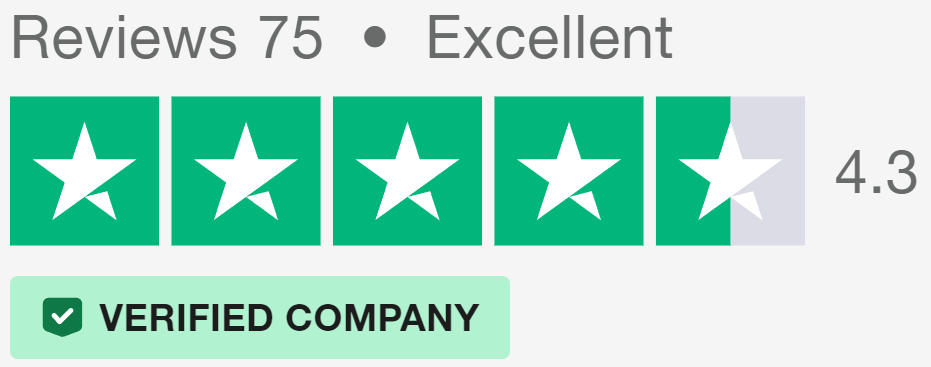
What Are Slide and Stack Doors?
Slide and stack doors offer a unique way to open up your living space. Unlike traditional sliding doors, these systems allow multiple panels to glide along a track and fold neatly to one side.
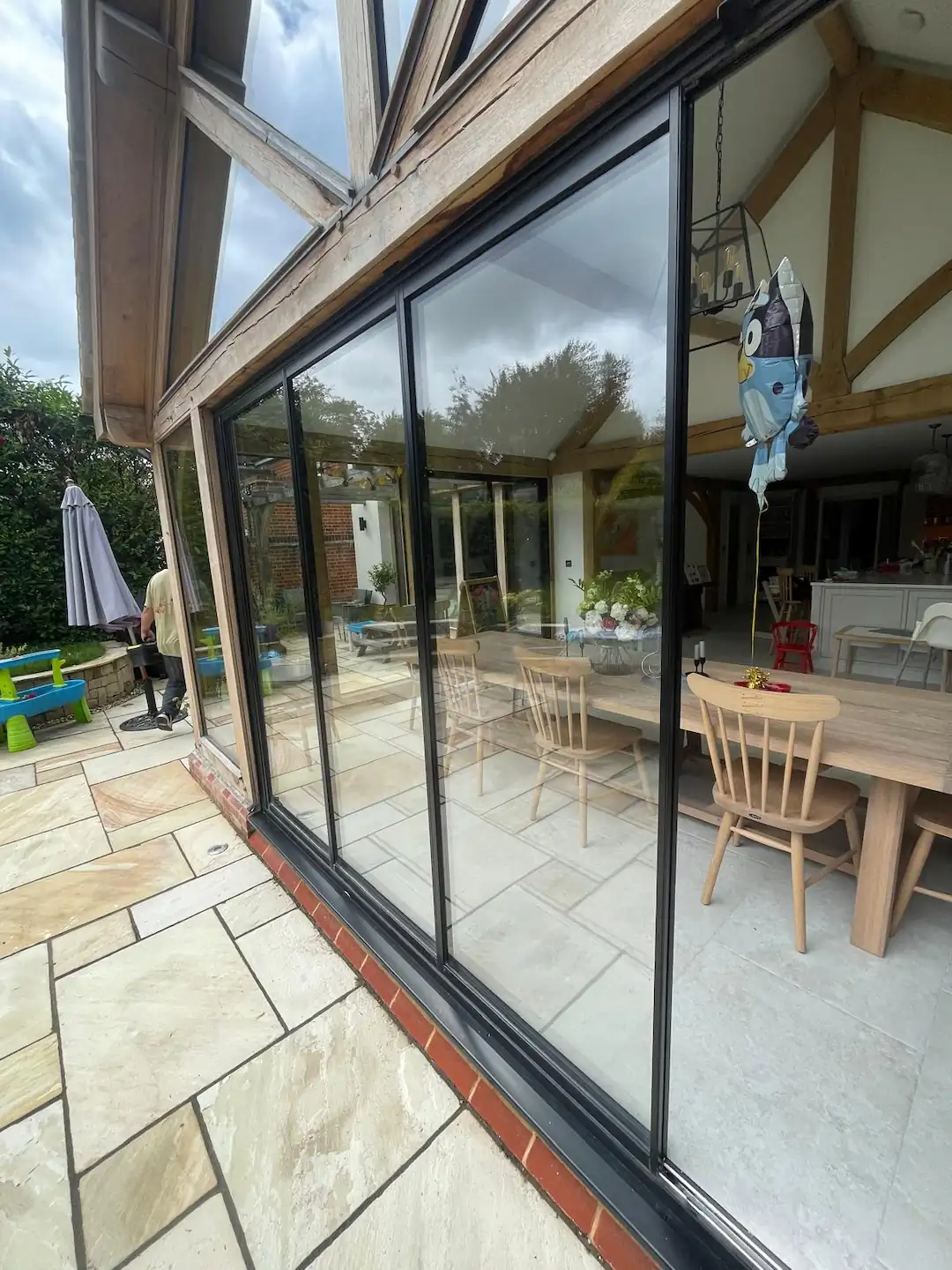
How Slide and Stack Doors Work
The magic of stacking sliding doors lies in their innovative track system. Each panel moves independently along a single or multi-track rail fitted at the top and bottom of the door frame. When fully open, the panels stack against each other at a 90-degree angle to the frame, tucking neatly out of sight.
High-quality rollers are important for the smooth operation of slide and stack glass doors. These small wheels, typically made of nylon or stainless steel, bear the weight of each panel and ensure effortless movement. The tracks, often made of aluminium, guide the rollers and keep the panels aligned.
Slide and stack patio doors often feature multi-point locking systems that engage at various points along the frame when closed. This design provides robust protection against forced entry while maintaining the door’s sleek appearance.
Space Efficiency of Slide and Stack Doors
One of the biggest draws of stack and slide doors is their space-saving design. Traditional bi-folding doors or swing doors require clearance to open, limiting furniture placement and potentially wasting valuable floor space. In contrast, stacking sliding glass doors tuck the panels away neatly, maximising usable area both inside and out.
Flexible Living Areas
Imagine hosting a summer barbecue where guests can move freely between your kitchen and garden. Slide and stack doors make this possible by creating expansive openings up to around 10 metres wide. When closed, these doors act as a glass wall, flooding your home with natural light and providing uninterrupted views of the outdoors.
Compact Storage
Even when fully open, stacking sliding doors take up minimal space. The panels fold and stack perpendicular to the opening, typically requiring only 10-15% of the total door width for storage. This compact design is particularly beneficial for smaller homes or apartments where every centimetre counts.
Door Materials
The choice of material for your slide and stack doors plays a major role in their appearance, durability, and performance. Each option brings its own set of characteristics to the table, influencing factors such as thermal efficiency, maintenance needs, and overall cost.
Industrial Revolution Influence
The Industrial Revolution, spanning the late 18th to early 19th century, brought about a dramatic shift in architectural materials and techniques. This period saw the widespread use of steel and glass, materials that were not only stronger and more durable than their predecessors but also allowed for greater design flexibility. Factories and warehouses were the first to adopt these new materials, leading to the creation of large, open spaces with expansive windows that let in copious amounts of light.
As the benefits of steel and glass became apparent, residential architecture began to incorporate these elements. The clean, industrial lines and practical nature of these materials found a natural place in the evolving aesthetic of home design. This transition laid the groundwork for the crittall style doors we recognise today, marrying industrial strength with architectural beauty.
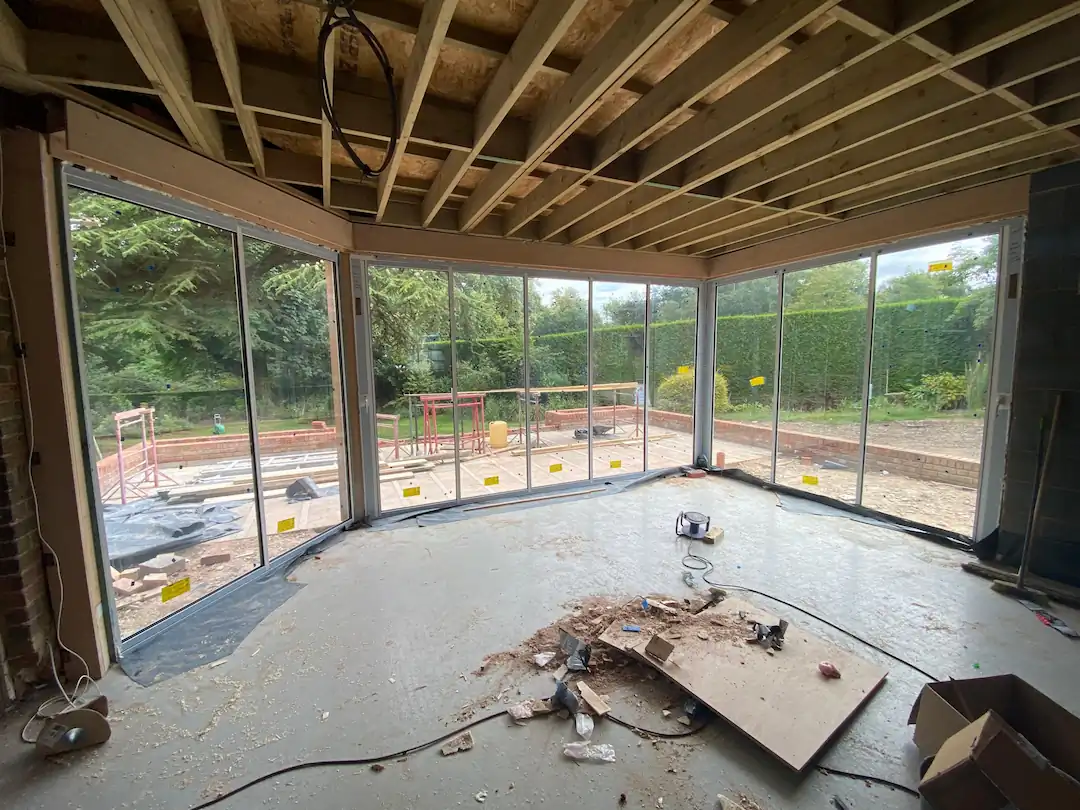
Aluminium Slide and Stack Doors
Aluminium has become a popular choice for stacking sliding doors due to its strength and versatility. These frames boast slim profiles, allowing for larger glass panels and maximising views. The material’s inherent rigidity means aluminium doors can withstand daily use without warping or sagging.
Contrary to common belief, modern aluminium slide and stack doors offer excellent insulation. Many manufacturers use thermal break technology – a barrier between the inner and outer frame sections – to reduce heat transfer. This innovation significantly improves the doors’ energy efficiency, keeping your home warm in winter and cool in summer.
One advantage of aluminium is the wide range of colour options available. Powder-coated finishes provide long-lasting colour that resists fading and chipping.
Timber Stack and Slide Doors
Timber frames bring a touch of traditional craftsmanship to both period properties and contemporary homes. Oak, pine, and mahogany are common species used in door construction, each offering unique grain patterns and colours.
Maintenance Requirements
While timber stacking sliding glass doors require more upkeep than their aluminium counterparts, many homeowners find the effort worthwhile. Regular cleaning and occasional re-varnishing or painting help protect the wood from moisture and UV damage. Properly maintained, wooden slide and stack patio doors can last for decades, developing character with age.
Environmental Impact
For eco-conscious homeowners, sustainably sourced timber presents an appealing option. Look for doors made from FSC-certified wood to ensure your purchase supports responsible forest management. Wood is also a natural insulator, contributing to the overall energy efficiency of your home.
uPVC Slide and Stack Glass Doors
Unplasticised Polyvinyl Chloride (uPVC) offers a budget-friendly alternative for aluminium stack and slide doors. This material has come a long way in recent years, with modern uPVC doors featuring improved strength and aesthetics. They’re particularly well-suited to coastal areas, as the material resists salt corrosion and doesn’t require painting.
uPVC slide and stack doors often boast impressive U-values, indicating good thermal performance. The material’s cellular structure traps air, creating a natural insulation barrier. This property helps keep your home comfortable year-round while potentially reducing energy bills.
Today’s uPVC doors are available in a variety of colours and finishes, moving beyond the traditional white. Some manufacturers offer woodgrain effects that mimic the look of timber, providing a cost-effective way to achieve a classic appearance without the associated maintenance.
Glass Types For Slide and Stack Doors
The glass in your slide and stack doors plays a vital role in their overall performance. It affects everything from energy efficiency to noise reduction and UV protection. Choosing the right glazing can make a substantial difference in your home’s comfort and running costs.
Double and Triple Glazing
Nearly all modern sliding doors for external use, including slide and stack patio doors, come with double glazing as standard. This consists of two panes of glass with a gap in between, usually filled with an inert gas like argon. The trapped gas acts as an insulator, reducing heat transfer between the inside and outside of your home.
Triple glazing takes this concept further by adding a third pane of glass. While more expensive, triple-glazed stacking sliding doors offer superior thermal performance. They’re particularly beneficial in colder climates or for north-facing installations where heat loss is a concern. The extra layer also provides improved sound insulation, which can be a boon if you live near a busy road.
Spacer Bars
In both double and triple-glazed units, the glass panes are separated by spacer bars. These play a big role in the thermal efficiency of slide and stack glass doors. Traditional aluminium spacers can conduct heat, creating cold spots around the edges of the glass. Modern ‘warm edge’ spacers, made from materials like structural foam or plastic, reduce this heat transfer and help prevent condensation.
Specialised Glass
Low-E Glass
Low-emissivity (Low-E) glass features a microscopically thin metallic coating that reflects heat. In winter, it helps keep warmth inside your home, while in summer it reflects the sun’s heat to keep interiors cool. This makes Low-E glass an excellent choice for slide and stack patio doors in variable climates.
Tinted and Solar Control Glass
For homes in sunny locations or with large south-facing openings, tinted or solar control glass can help manage heat gain. These treatments reduce glare and limit the amount of solar energy passing through the glass. While effective, they can also reduce natural light transmission, so balance is key when considering this option for your stack and slide doors.
Acoustic Glass
If noise reduction is a priority, acoustic glass might be worth considering for your stacking sliding doors. This specialised glass uses a layer of PVB (polyvinyl butyral) between the panes to dampen sound waves. It’s particularly effective at blocking high-frequency noise, making it ideal for urban environments.
Slide and Stack Door Configurations
Slide and stack doors offer a range of configuration options to suit different spaces and needs. The flexibility in design allows homeowners to customise their doors to match specific architectural requirements or personal preferences.
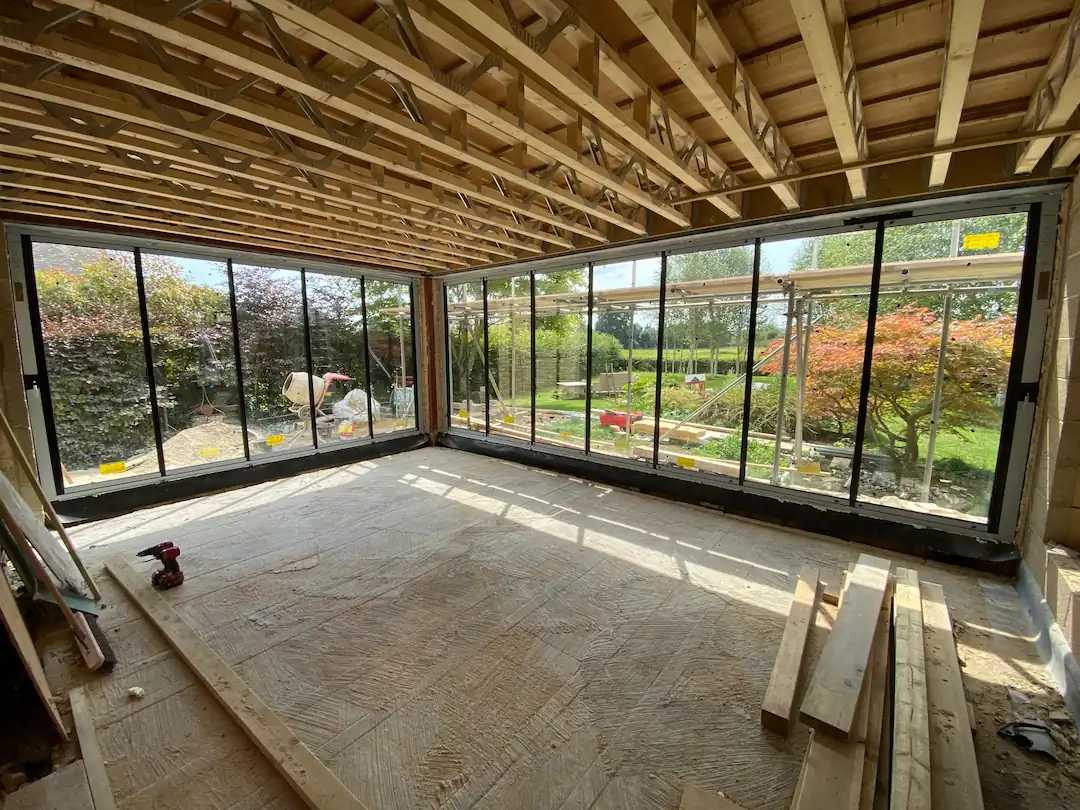
Number of Panels
The number of panels in your slide and stack doors depends on the width of your opening and your desired aesthetic. Smaller openings might only require two or three panels, while larger spaces could accommodate five or more. Stack and slide doors with multiple panels can create impressively wide apertures, allowing for an almost uninterrupted view when fully open.
Each panel typically measures between 750mm and 1200mm wide. The exact size often depends on the material used and the overall dimensions of your opening. Aluminium frames, being stronger and lighter, can support larger glass panes than timber or uPVC. This means you might need fewer panels to cover the same area, resulting in cleaner sightlines when the doors are closed.
It’s important to note that as the number of panels increases, so does the overall weight of the system. Stacking sliding doors with numerous panels require robust tracks and rollers to ensure smooth operation. High-quality hardware becomes especially important in these larger configurations to prevent sagging or misalignment over time.
Opening Styles
Slide and stack doors can be designed to open from the centre, from one end, or even from both ends. The choice often depends on the layout of your room and how you plan to use the space.
Centre-Opening Configuration
A centre-opening design for slide and stack glass doors splits the panels into two groups that slide to opposite sides. This style creates a symmetrical look and allows for easy access from the middle of the opening. It’s particularly useful for wide apertures, as it reduces the distance each panel needs to travel when opening or closing the doors.
Single-Side Opening
In this configuration, all panels of the stacking sliding doors slide and fold to one side. This setup works well when you have limited space on one side of the opening or if you want to keep one side clear for furniture placement. Single-side opening slide and stack patio doors can be especially practical for installations near corners or adjacent walls.
Traffic Door Option
Some slide and stack door systems include a ‘traffic door’ – a single panel that can open independently like a traditional door. This feature proves handy for quick access without needing to open the entire system. It’s particularly useful in cooler weather or when you just want to pop outside briefly.
Threshold Choices
The threshold of your slide and stack doors plays a key role in both aesthetics and functionality. Options range from standard raised thresholds to low-profile or even flush designs.
Raised Threshold
A raised threshold offers the best weather protection for your slide and stack doors. It creates a physical barrier against drafts and water ingress. However, it also means there’s a step to navigate when moving between indoor and outdoor spaces.
Low-Profile and Flush Thresholds
Low profile and flush threshold designs minimise the step between inside and outside. They’re particularly beneficial for households with young children, elderly residents, or those using mobility aids. However, it’s worth noting that very low thresholds may offer less protection against extreme weather conditions.
Maintenance of Stack and Slide Doors
Proper maintenance of slide and stack doors ensures their longevity and smooth operation. Regular care not only keeps your doors looking their best but also prevents costly repairs down the line. With a bit of attention, your stacking sliding doors can continue to function flawlessly for many years.
Cleaning Methods
Cleaning slide and stack doors is straightforward but requires care to avoid damaging the glass or frames. For the glass panels, use a mild detergent solution and a soft, lint-free cloth. Avoid abrasive cleaners or rough materials that could scratch the surface. Pay special attention to the corners and edges where dirt can accumulate.
For the frames, the cleaning method depends on the material. Aluminium and uPVC frames can be wiped down with a damp cloth and mild soap solution. Timber frames might require special wood cleaners to maintain their finish. Regardless of material, always dry the frames thoroughly after cleaning to prevent water damage or corrosion.
Regular Upkeep
Beyond cleaning, slide and stack doors benefit from regular maintenance to ensure smooth operation. The tracks that guide the door panels are particularly important. Over time, these can collect dirt, leaves, and other debris, which can impede the doors’ movement.
Track Maintenance
To keep your slide and stack glass doors gliding smoothly, vacuum the tracks regularly to remove loose debris. For more thorough cleaning, use a small brush to dislodge any stuck-on dirt, then wipe the tracks with a damp cloth. Avoid using water excessively, as it can lead to corrosion or damage the floor beneath.
Lubrication
The rollers and hinges of stacking sliding doors need periodic lubrication to function properly. Use a silicone-based lubricant spray on these moving parts every few months or as recommended by the manufacturer. Be careful not to over-lubricate, as this can attract dust and grime.
Weather Seals
Check the weather seals around your slide and stack doors regularly. These rubber or brush seals prevent drafts and water ingress. If you notice any damage or wear, replace them promptly to maintain your doors’ energy efficiency and weather resistance.
Energy Performance
The energy performance of slide and stack doors can have a substantial impact on your home’s comfort and energy bills. Well-designed and properly installed stacking sliding doors can help regulate indoor temperature and reduce reliance on heating and cooling systems.
U-Values
When shopping for slide and stack doors, you’ll often encounter the term ‘U-value’. This measure indicates how effectively a door prevents heat from escaping. The lower the U-value, the better the door’s insulating properties. For slide and stack glass doors, U-values typically range from 1.4 to 1.8 W/m²K, with lower values indicating superior thermal performance.
Several factors influence the U-value of stack and slide doors. The type of glazing (double or triple) plays a major role, as does the gas used between the panes. The frame material also affects overall thermal performance. For instance, timber frames generally offer better insulation than aluminium, though modern aluminium frames with thermal breaks can compete effectively.
Insulation Features
Beyond the basic construction, various features can improve the insulation of slide and stack doors. Weather stripping around the edges of each panel helps prevent air leakage. Some systems incorporate brush seals along the tracks for additional draft protection.
For aluminium slide and stack patio doors, thermal breaks are a key feature. These are insulating plastic strips inserted between the inner and outer parts of the frame. They create a barrier that reduces heat transfer, dramatically improving the doors’ thermal performance.
How Much Do Slide and Stack Doors Cost?
The cost of slide and stack doors can vary widely depending on several factors.
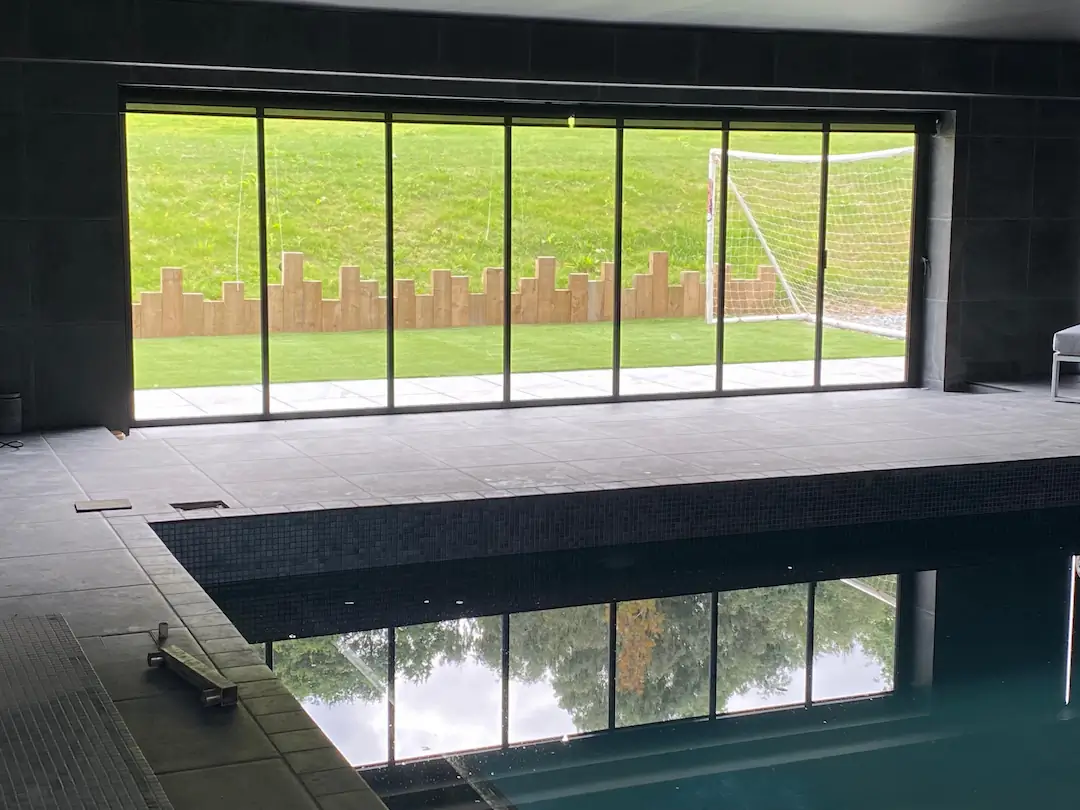
Door Dimensions
The size of your slide and stack doors is a primary factor in determining their cost. Larger openings require more materials and often more complex engineering, which increases the price. Custom sizes, while offering a perfect fit for your space, typically come at a premium compared to standard dimensions.
Glass Area
Stacking sliding doors with larger glass panels might seem more expensive initially, but they can offer better value in terms of views and natural light. Fewer frame elements mean less obstruction and potentially simpler maintenance in the long run.
Material Costs
The choice of frame material has a big effect on the price of slide and stack doors. uPVC is generally the most budget-friendly option, while aluminium and timber sit at higher price points. Composite materials, offering the benefits of multiple materials, often come with a premium price tag.
Long-Term Value
When considering materials, it’s worth looking beyond the initial cost. Aluminium slide and stack glass doors, for instance, might have a higher upfront cost but offer excellent durability and low maintenance needs. Timber doors, while requiring more upkeep, can last for decades if properly maintained and offer a classic aesthetic that many homeowners value.
Optional Extras
Various additional features can add to the cost of stack and slide doors. Triple glazing, while more expensive than double glazing, offers superior insulation. Specialised glass types, such as self-cleaning or acoustic glass, also come at a premium.
Hardware and Finish Options
The quality of hardware used in slide and stack doors affects both price and performance. High-end rollers and locks might increase the initial cost but can provide smoother operation and enhanced security. Similarly, special finishes or colours, particularly for aluminium frames, can add to the overall price but allow for greater customisation to match your home’s aesthetic.
Frequently Asked Questions
Can slide and stack doors be used in place of traditional sliding patio doors?
Absolutely. Slide and stack doors offer a modern alternative to conventional sliding patio doors. Stack and slide systems provide unique benefits over other types of sliding doors. They allow for a wider opening, as the panels can fold and stack to one or both sides. This design creates a more open feel compared to traditional sliding doors, where one panel always remains in place.
Are slide and stack doors a good French door alternative?
Slide and stack doors can indeed serve as an excellent alternative to French doors. While French doors offer a classic look, slide and stack systems provide greater flexibility in terms of opening size. They allow you to open up an entire wall, creating a much wider aperture than French doors typically allow. This makes slide and stack doors particularly useful for homes with beautiful views or for those who frequently entertain outdoors. However, it’s worth noting that slide and stack doors generally have a more contemporary appearance, which may not suit all home styles.
Are slide and stack doors a suitable alternative to bifold doors for large openings?
Slide and stack doors are certainly viable bifold door alternatives for large openings. Both systems allow for wide apertures, but slide and stack doors have some unique advantages. They typically require less space to stack when open, as the panels slide along a single track before folding. This can be particularly beneficial in areas where space is at a premium. Additionally, slide and stack doors often offer slimmer sightlines when closed, potentially providing better views. However, the best choice depends on your specific needs, space constraints, and aesthetic preferences.
How do slide and stack doors function in commercial office spaces?
In commercial settings, slide and stack doors can serve as flexible office glass partitions. They allow for easy reconfiguration of spaces, making them ideal for modern, adaptable office layouts. When closed, these doors create private meeting areas or separate work zones while maintaining a sense of openness thanks to their large glass panels. When open, they allow for collaborative spaces or larger conference areas. The ability to quickly change the office layout makes slide and stack doors a popular choice for businesses that value versatility in their workspace design.
What should I consider when choosing slide and stack doors for my living room?
When selecting slide and stack doors as glass doors for living rooms, several factors come into play. First, consider the size of the opening and how it will affect the room’s layout and furniture placement. Think about the direction of sunlight and how it might impact glare or heat gain. The frame material and glass type are also important – you might opt for thermally efficient options to maintain a comfortable indoor temperature. Don’t forget about privacy; while these doors offer great views, you may want to consider additional window treatments for evening use. Lastly, ensure the style of the doors complements your living room’s overall design aesthetic.
What are the advantages of using slide and stack doors in garden room designs?
Slide and stack doors offer several benefits as doors for garden rooms. They create a strong visual connection between the garden room and the outdoor space, allowing you to enjoy garden views even when the doors are closed. When open, they provide expansive access to the garden, perfect for summer entertaining or simply enjoying the fresh air. The ability to open up an entire wall blurs the line between indoor and outdoor living, making your garden room feel more spacious and connected to nature. Also, the large glass panels of slide and stack doors allow plenty of natural light into the garden room, potentially reducing the need for artificial lighting during the day.
Made to Measure Slide and Stack Doors
Vision Glass Doors is a designer, manufacturer, and installer of premium door systems. We are a family run business with over 20 years’ experience and 5,000 installations across the UK.
Our doors have gone through rigorous security testing and successfully passed PAS-24 certification. This is a requirement by law for all new-build homes.
All our systems are made to measure, designed, and fabricated at our manufacturing facility in Luton, Bedfordshire. We offer installation within a 100-mile radius.
Our leading range of door systems include Ultra Slim – Slide and Turn Doors, Slimline Sliding Patio Doors and Frameless Glass Doors. Suitable for various internal and external applications, they are applicable to residential and commercial projects.
Click Quick Quote Online for a free quotation within 24 hours. Alternatively, call or email us on 01582 492730 or at info@visionglassdoors.co.uk.

